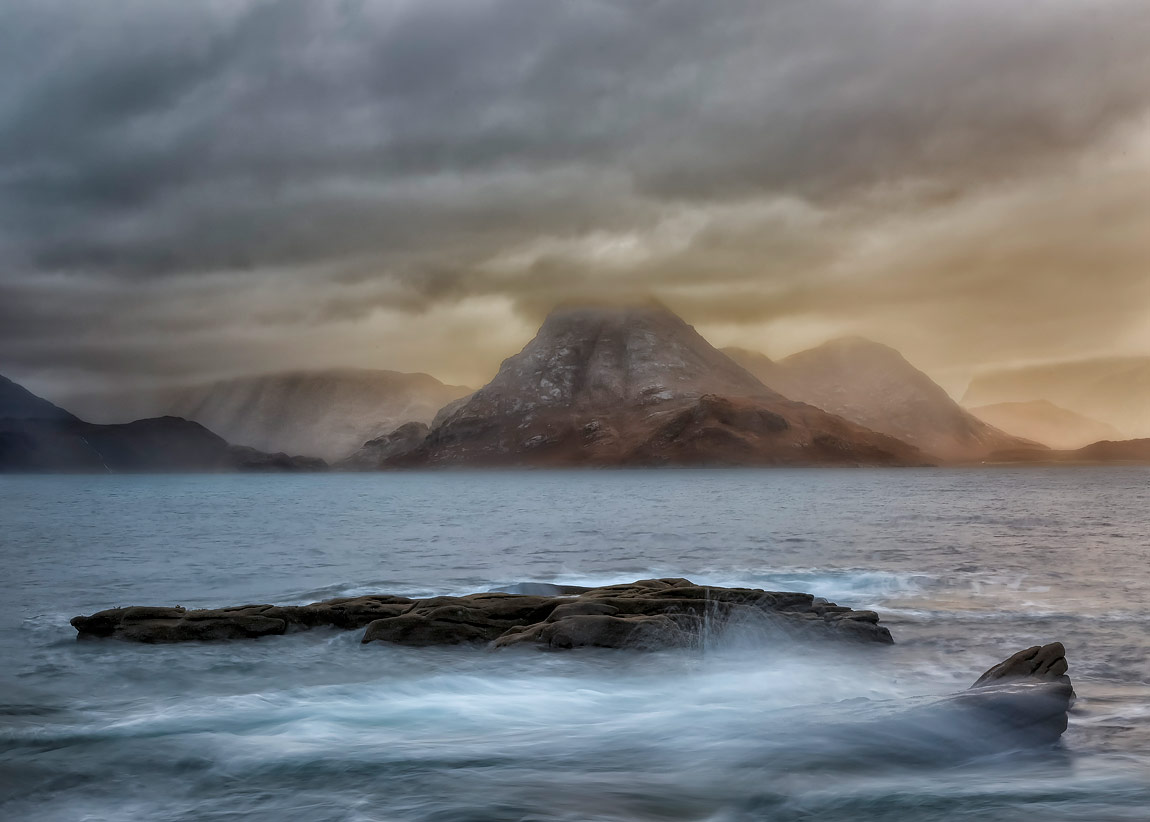I arrived on the shores of Loch Scavaig, located on the south coast of Isle of Skye, late in the afternoon. The sky was dark, and a light rain created an atmosphere ideal for photographing a dramatic Scottish landscape. I started hiking towards the water's edge with my camera gear safely stored in my backpack. The rocks were slippery, so I had to be extra careful not to slip and fall. Even in sunny, dry conditions, I never walk with my camera attached to my tripod.
When I arrived at my destination, I unpacked my camera and started exploring the area for interesting compositions. I find walking around and taking a few handheld test shots more productive before mounting my camera on a tripod. Once I decided on a location, I set up my tripod and adjusted my camera settings. I selected a one-second exposure to achieve the water motion of the waves in the foreground.
Timing is everything in landscape photography, and I find that having patience is key to getting the dramatic shots I am looking for. Once I found my spot, I waited and waited and waited as I watched the scene before me changing. Sometimes it takes only a subtle change in light to make a big difference in the impact of a photo. Then, as the sun started to break through the heavy cloud cover, the rain began to pick up – just my luck. I used a microfiber cloth to remove the raindrops from my lens and kept shooting until the remaining light disappeared.
Stormy conditions may be difficult to work in but often produce amazing results.


